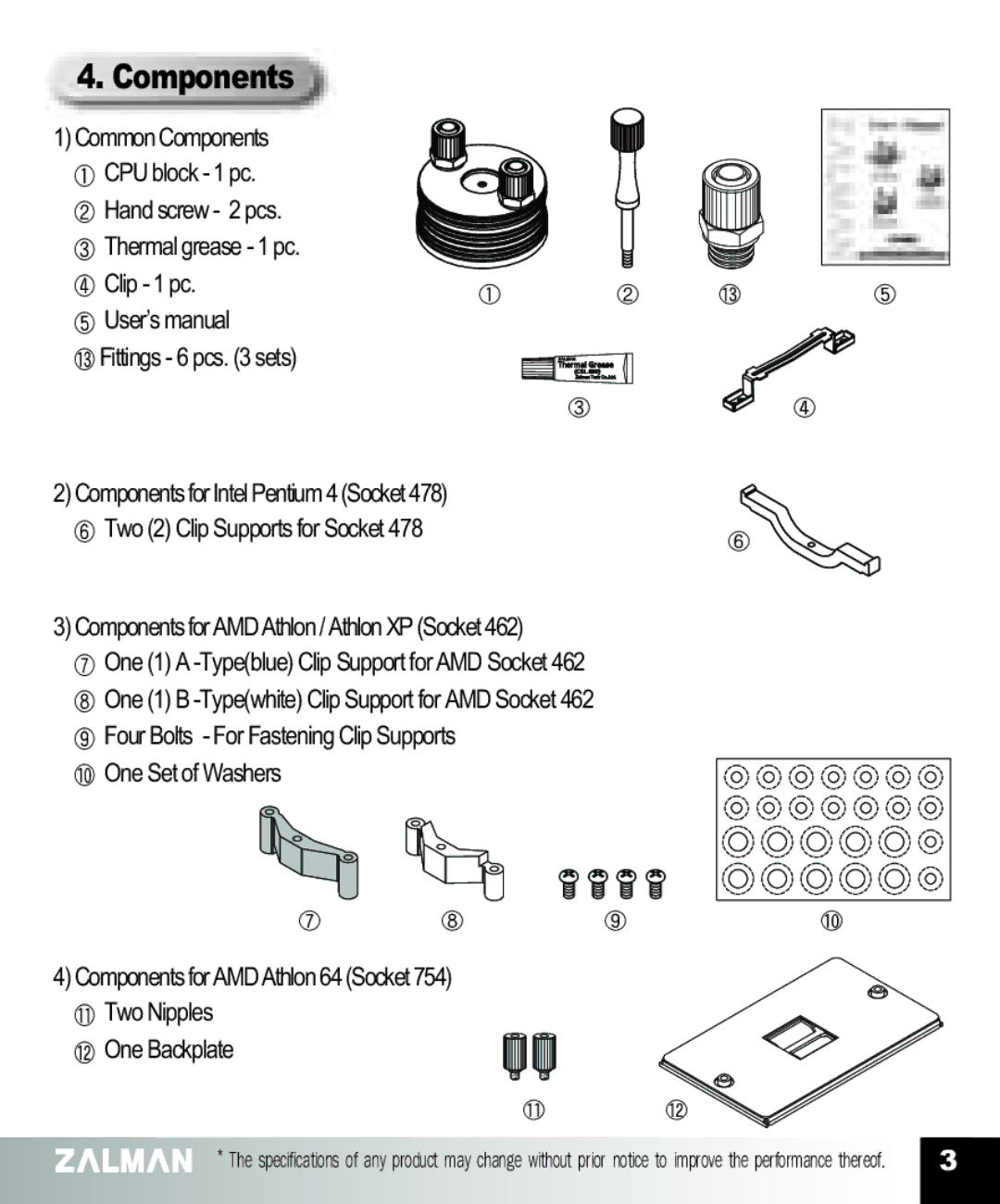Socket 462 CPU, Socket 478 CPU, Socket 754 CPU specifications
ZALMAN is a well-known brand in the computer hardware industry, particularly recognized for its innovative cooling solutions. Among the many components that users may consider during a system build are CPUs and their corresponding sockets. Three notable CPU sockets are Socket 754, Socket 478, and Socket 462, each with unique features and characteristics.Socket 754, introduced by AMD in 2003, primarily supported the Athlon 64 and Sempron processors. One of its main features was its ability to support 64-bit computing, paving the way for enhanced performance and access to larger amounts of memory. This socket used a single-channel memory interface, which, while limiting in bandwidth compared to dual-channel configurations, still offered solid performance for its time. Socket 754 processors were built on a 130nm or 90nm manufacturing process, resulting in lower power consumption and heat generation. This made them compatible with various cooling solutions, including ZALMAN’s effective cooling systems, which increased system stability by maintaining lower temperatures.
Socket 478 was developed by Intel and released in 2002, primarily used for Pentium 4 processors and some Celeron chips. A notable characteristic of this socket was its support for Hyper-Threading technology, which allowed multiple threads to be processed simultaneously, improving multitasking capabilities. Socket 478 supported a 400MHz to 800MHz front-side bus, enhancing data transfer rates between the CPU and other components. It was built on a 130nm technology initially, with later versions transitioning to 90nm, thereby increasing efficiency and performance. The design of Socket 478 facilitated easy CPU upgrades, making it a popular choice among DIY builders.
Socket 462, also known as Socket A, served as a widely adopted platform from 2000 until around 2006. Exclusively used for AMD’s Athlon and Duron processors, it supported both 32-bit and early 64-bit computing. One of the key features of Socket 462 was its symmetrical design, which allowed for easy cooling solution installation. The socket supported a front-side bus ranging from 100MHz to 200MHz, catering to a variety of performance levels. The widespread adoption of Socket 462 resulted in a robust ecosystem of motherboards and cooling solutions, including ZALMAN’s high-performance fans, which were crucial for maintaining optimal operating temperatures.
In summary, each of these CPU sockets—Socket 754, Socket 478, and Socket 462—catered to different needs of computer users and enthusiasts. From AMD’s push into 64-bit processing with Socket 754 to Intel's Hyper-Threading capabilities in Socket 478 and Socket 462's versatility for budget systems, all provided a solid foundation for performance computing while benefiting from robust cooling solutions like those offered by ZALMAN.

